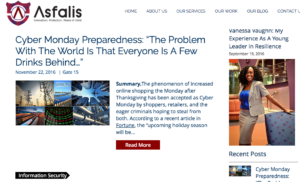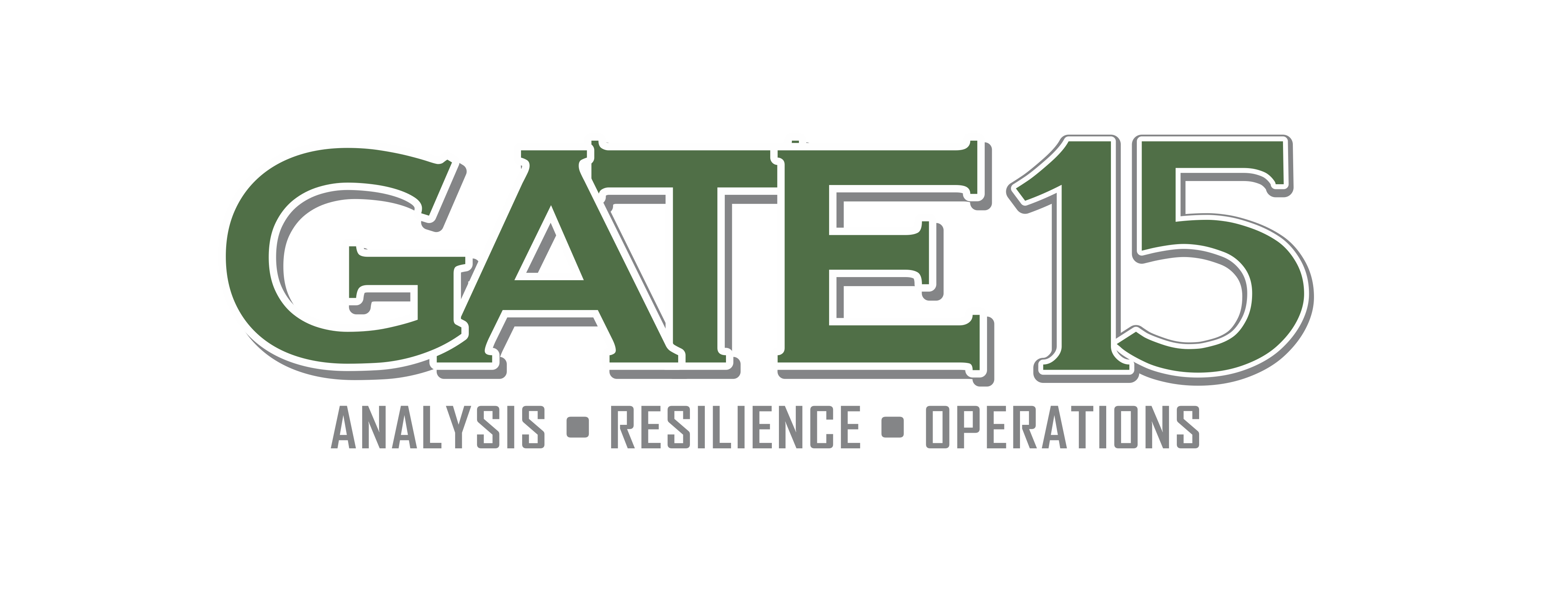Introduction. At Gate 15, our team focuses on risk management and organizational security and resilience, with unique expertise in threat analysis, operations and preparedness (planning, training, exercise and continuity) support. Recognizing that clients and partners require additional technolo gy, services and capabilities to effectively manage their complete risk profile, our team partners with organizations that can enhance our competencies and which offer additional risk management resources that complement our capabilities. On the “About Us” page of this website, you’ll see some of our outstanding partners. In a five-part series, we’ll be posting updates with interviews with these partners to share more about what they do and how they can help organizations reduce their risk and enhance preparedness, security and resilience.
gy, services and capabilities to effectively manage their complete risk profile, our team partners with organizations that can enhance our competencies and which offer additional risk management resources that complement our capabilities. On the “About Us” page of this website, you’ll see some of our outstanding partners. In a five-part series, we’ll be posting updates with interviews with these partners to share more about what they do and how they can help organizations reduce their risk and enhance preparedness, security and resilience.
Asfalis Consulting: Interview with Founder, Vanessa S. Vaughn
You have a pretty remarkable personal story on how you became interested in this field. Could you share a little of that? Yes, I was sitting in my car in front of Centennial Olympic Park in Atlanta, GA and it was a beautiful day. The wind speed picked up and then hail began pounding on my car. After a few minutes, I noticed that I could no longer see out of my windows due to the debris. A light pole to the left of my car fell to the ground and a brick building I was parked next to collapsed. Then I heard a loud noise, and found myself covered in glass, after my windows burst. The wind speeds were so strong my car began rising in the air and I saw dumpsters, billboards and cars flying around, similar to the movie Twister. After a prayer pleading for my life, the car dropped to the ground and I later found out I was in the middle of a tornado with wind speeds exceeding 200 mph. After that experience I knocked on the door of the Atlanta-Fulton County Emergenc y Management Agency and asked them could I work there to help communicate with citizens about the hazards and risks we face daily in our communities. That experience birthed the passion I have in the industry.
y Management Agency and asked them could I work there to help communicate with citizens about the hazards and risks we face daily in our communities. That experience birthed the passion I have in the industry.
That’s an amazing story and explains a lot about your passion in this field. At Gate 15, we emphasize understanding the threat environment in order to be able to properly assess risk with hopes that armed with that knowledge, organizations can invest their limited time and resources into the most vital preparedness and operational activities. Continuity is a huge part of preparedness! If I’m an organization just starting to look at continuity preparedness, any tips for how to approach that and any “most critical” areas to make sure are covered early on? I think people should always be educated in something before they invest in it. My suggestion is to understand what continuity planning is and how it can impact your organization. Similar to technology, understand all the “bells and whistles” before you buy it. Secondly, ensure your leadership team at the highest levels within the organization will sponsor the program by providing resources and time. Buy-in is the most critical component of the program. Once you have the foundation in place you need a continuity team that has the ability to sell the program across the organization, and a reporting process. At a minimum, senior leaders and stakeholders should receive documentation and metrics about the program quarterly.
On your website you note, “your team will perform exactly how they practice.” We’re big believers in that – people do what they are been conditioned to doing. If they are trained on how to respond, they’ll do it and if not, it’s a free for all… if someone is trying to work on the blocking and tackling drills of continuity, what are those fundamental training activities they may want to consider? The first goal is to ensure you have time commitments from the executive level to support the exercises. Outside of the that, the fundamental training activities include a strategic, and creative exercise planning team that has the ability to develop a realistic exercise scenario that is memorable. Exercises expose gaps in processes that senior leaders are unaware of and they influence change quickly, depending on who is in the room. If you have the right people at the table, a well-designed exercise and an experienced facilitator, you have everything you need. Once they are in the room, the follow-up or after-action reports are where the real work begins. If they practice in silos, they will perform in silos. Therefore, continue to design and facilitate exercises that expose the gaps until they are fixed.
We really believe in the necessity of conducting exercises to validate plans and training and to be able to realistically assess how prepared an organization’s workforce, equipment and facilities are for incidents. Are there certain types of exercises you find most effective for continuity preparedness? I think exercises differ depending on the organization, the products and services they offer, as well as the company culture. The most important thing is to test the plan. For instance, if the continuity planner knows the finance department was not detailed about their continuity strategies from week three to four, then develop an exercise that drills in on that concern. Don’t spend too much time focusing on the parts of the plan that are solid, spend your time on the areas that may need improvement. If you build exercises that expose gaps you are helping the organization.
I think we’re in a time when we’ve got the natural hazard folks – FEMA and its partners – evangelizing on the importance of preparedness, but I still think for most organizations – especially smaller and medium sized organizations – the idea of spending limited time and money on preparing for hostile events or, even less so, for cyber disruptions and downtime, is somewhat of a hard case to make. What would you say are the costs of not properly preparing for continuity of operations? Think of your company as an exotic car. Do you have what you need to support your collision through liability or full coverage insurance? The cost of not preparing for continuity of operations is your peace of mind – protecting the resources that are intended for business upgrades, unhappy customers, employees, longevity, time, reputation, regulatory fines, the list continues. Everything your organization has invested and sacrificed for is what is on the line; if you assess the risk losing everything as acceptable, then don’t invest in continuity plans. If it’s not, then make the investment!
If someone reading this post is curious for more information about your products and services, what’s the best way to get more information? The best way to reach us is through our website’s “contact us” page.
Thank you, Vanessa! We’re excited about what you’re doing and look forward to future opportunities for our teams to collaborate!



